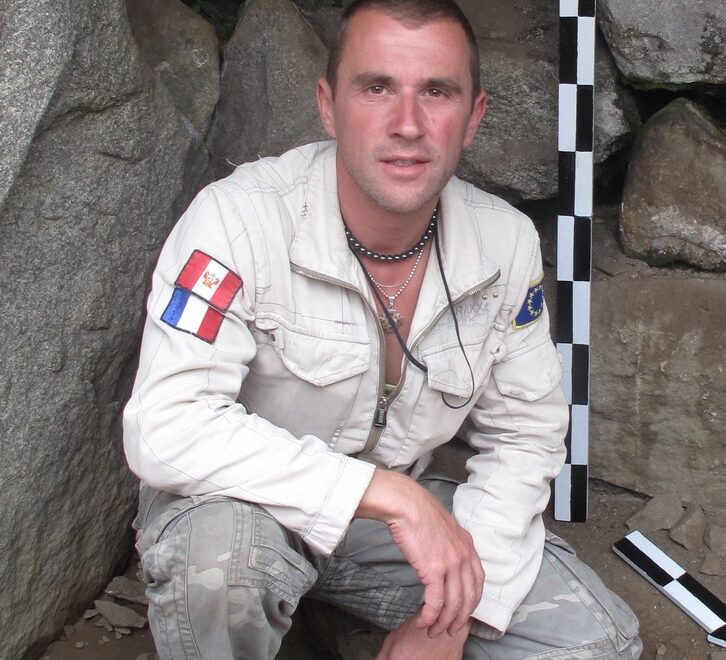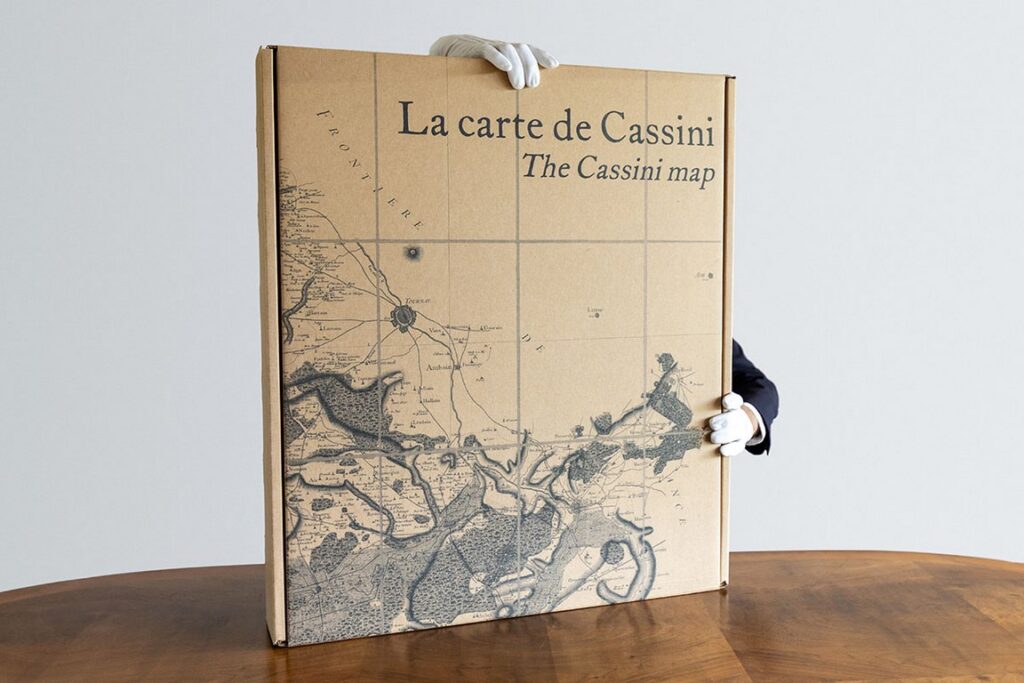
French explorer Thierry Jamin is the founder of the Peruvian Institute Inkarri-Cusco, an NGO dedicated to archaeological research. For over fifteen years, he and his team have been scouring the Amazon rainforest in search of the famous lost city of the Incas, Paititi. This specialist in pre-Columbian civilisations, known in Peru for having identified some fifteen archaeological sites that had not been recorded by the Peruvian Ministry of Culture, was contacted by tomb robbers who brought him the famous Nazca mummies.
What advances and discoveries have been made since the publication of your book?
Since the publication of my book The non-human mummies of Nazca, the team of researchers from the Universidad Nacional San Luis Gonzaga de Ica (UNICA) has begun studying and analysing the mummies that we handed over to them in July 2019. The mummies in question are Maria, Wawita (a child's mummy whose hands and feet had been mutilated), Albert and Victoria. The team is led by anthropologist Roger Zuñiga. At the start of 2020, they even managed to recover another "reptilian humanoid" specimen, which they named Luisa, in honour of San Luis Gonzaga University.
In February 2020, Dr Zuñiga's team again carried out high-resolution tomographic scans in a Lima clinic using a 128-slice scanner. The results are interesting because, despite what some critics of the case claim, they did not detect any traces of fraud concerning, for example, the hands and feet of the mummy named Maria. A Peruvian specialist with over thirty years experience meticulously examined the scans of 128 sections and concluded that the specimen was authentic.
The Luisa specimen revealed the presence of three ovoid objects in its abdomen. Like Josefina, another mummy harbouring many secrets, sceptics claimed that these were nothing more than objects made of stone, wood or metal, placed in the abdomen of a fake mummy, fabricated from scratch as part of a well-organised fraud. However, a biopsy was carried out on one of these objects in February 2020, which revealed that they were indeed eggs, containing organic matter.
In the case of the specimen known as Albert, bone samples were taken in 2021 from the skull, a rib and the pelvis in order to study the DNA. The analyses carried out showed, without a shadow of a doubt, that the DNA used in all three cases was identical. This contradicts the arguments of detractors who claim that these humanoid bodies were made from the bones of different animals, or even children! On the contrary, the analyses showed that all three samples belonged to the same individual.
At the same time, a prestigious American university (which wishes to remain anonymous for the time being) and the National University of Engineering, or UNI, in Lima, joined the studies initiated by UNICA. UNI is now one of the most prestigious engineering universities in Latin America, and therefore enjoys a good reputation. In particular, it has embarked on the study of mysterious metallic objects found in certain bodies or attached to the skin. As in the case of Josefina, the Luisa mummy has a kind of "pectoral" attached to her thorax. This object was studied by the UNI. Much to the surprise of the engineers who studied it, several traces of osmium were discovered in the object's components. This is one of the rarest and most expensive metals on the planet. It has the highest melting point and is superconducting. The presence of this type of metal in Luisa's implant is therefore legitimately surprising. Why would Mario, her discoverer, have gone to the trouble of putting osmium in such an object, assuming it was a fraud? It just doesn't make sense. And where would Mario have found this osmium? Osmium is generally only found mixed with platinum. Mario would no doubt have made more money by selling the osmium directly on the international rare metals market?
Does the UFO hypothesis hold true?
Even if it is difficult to affirm that these species are of extraterrestrial origin, I nevertheless believe that it is the most likely hypothesis, in view of the latest analyses carried out by Dr Roger Zuñiga's team, and presented on 07 November 2023 to the Congress of the Republic of Mexico. Of course, the detractors of this affair will continue to deny it. But there are none so blind as those who refuse to see.
How can we explain the fact that one or more species performed surgery, inserted implants under the skin and used a precious metal like osmium?
It's very likely that the site discovered by 'Mario' in 2015 is some kind of hybridisation and cloning laboratory. I know that this idea may seem incongruous and anachronistic. But that's the conclusion we're all coming to at the moment. We can no doubt expect major announcements in this direction in the coming months? As for the use of osmium, we can only speculate: this superconducting metal is widely used in aerospace and telecommunications. So is it a former GPS? Transmitter? Will we ever know?
Do we know what Josefina's eggs are made of?
The eggs of Josefina, Luisa, Artemis and several other specimens currently being studied are of biological origin. They are not made of wood or metal objects, as critics have claimed. What's more, a protein-based substance that once surrounded the eggs and was used in their development has recently been identified.
What are the possible implications of these discoveries for our understanding of the universe and our relationship with other forms of life?
On 12 September and 07 November 2023, some twenty specialists from many countries presented the conclusions of their studies to the Congress of the Republic of Mexico. These scientists all have at least a doctorate and an impeccable professional record. They have unanimously declared that these desiccated beings are veritable mummies. The bodies are biological and were alive at some point in our history. The implications are staggering. They show that we are not alone in the universe. We never have been. They are already here, among us. Some of them may even have participated in the appearance of modern man, thousands or millions of years ago. This is more or less what Dr Celestino Adolfo Piotti implied in his speech on 07 November.
Major discoveries will no doubt be made in 2024 about this case.
Where are the mummies and biological materials that have been entrusted to you now?
Several of the mummies discovered by Mario are still in the hands of Dr Zuñiga's team at the University of Ica. Others are hidden here and there. Still others have been sold by Mario to foreign private collectors. And we can only regret and condemn this trafficking.
Are palaeontologists coming to study these entities?
To my knowledge, no palaeontologist has yet come to Peru to study these desiccated bodies. This is very regrettable, especially as Dr Zuñiga's team would be keen to collaborate in this way.
Do you believe that the Nazca subsoil is inhabited by entities of unknown origin?
There are many accounts from people living in the Nazca region who claim to have met or seen this type of entity. I myself have had the opportunity to interview a number of these witnesses. What's more, this is nothing new. As far back as the Inca period, it is said that non-human humanoid entities existed underground in the Andes. Some Spanish chroniclers, such as Guamán Poma de Ayala, echoed this in the 16th century. The inhabitants of the Andes referred to these small intelligent entities as "gentiles" or Piwis. Guamán Poma de Ayala even depicted them in his famous illustrated chronicle. Finally, when we see the incredible wealth of iconography depicting these little reptilian humanoid beings on cloth, ceramics, rock (petroglyphs) or on the desert floor (geoglyphs), we are forced to ask the question of a possible ancient contact between our humanity and a "race" from who knows where. Question: what became of this "race"? The debate remains open?
Interview by Brigitte Postel
Read the article https://universvoyage.com/les-momies-non-humaines-de-nazca-la-decouverte-de-deux-nouvelles-especes/

